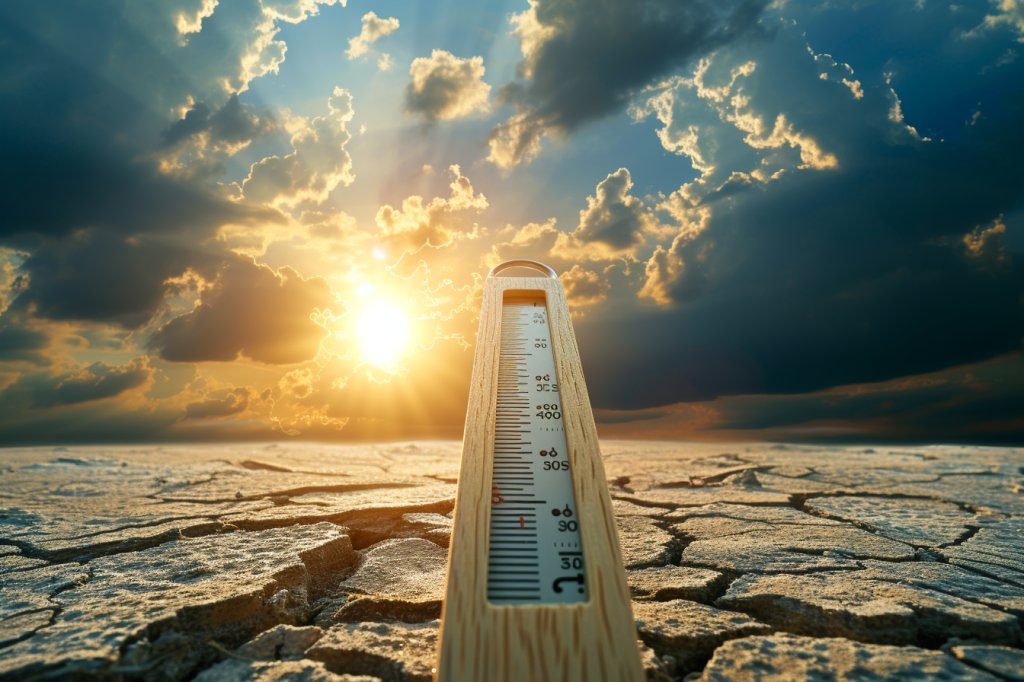As the summer sun climbs higher over the UAE, we enter the season when the desert becomes a furnace and life finds remarkable ways to adapt, thrive, and even find beauty in the heat.
The Onset of Peak Summer Heat
The UAE’s summer builds steadily from late May into June, with July and early August marking the peak period. Daytime high temperatures commonly approach 48–49 °C, and humidity adds that stifling weight to the air. As we enter this sweltering chapter, one question burns on everyone’s mind: will we cross the 50 °C mark?
While temperatures of 50 °C or more remain relatively uncommon, they are not unheard of. The combination of persistent inland heat crusted atop urban surfaces creates localised spikes. Whether temperatures actually cross that threshold in a given year hinges on regional winds, sandstorms, and extraordinary weather patterns. Still, even without breaching 50 °C, the intensity of the heat demands serious attention.
What Crossing 50 °C Would Mean
Temperatures exceeding 50 °C would push the limits of health, comfort, and infrastructure. Human bodies are remarkably resilient but also vulnerable. Extended exposure risks heat exhaustion, dehydration, and heatstroke especially for outdoor workers and vulnerable groups.
Buildings would feel even hotter; air conditioning systems strain; power grids run near capacity; road surfaces may soften; and outdoor events get drastically curtailed. But amid these challenges, people persist and often adapt impressively through innovation and community action.

Humanizing the Heat: Stories of Adaptation
Embracing the Early Morning
Many residents begin their day before dawn. Joggers hit the Corniche at sunrise; families pack picnics for pre sunrise desert drives; and gardeners water vegetable plots while the air is still cool. These routines reflect the human spirit: shifting schedules, finding harmony with nature’s rhythms.
Workers Creating Smart Habits
Outdoor workers including construction teams, delivery crews, and landscapers adopt practices like frequent water breaks, shaded rest areas, cooling towels, and lighter uniforms. Some companies invest in misting stations or rotate shifts to avoid the midday peak. These real world strategies help reduce risk and keep communities moving.
Community Cooling Hubs
Public spaces, religious centres, malls, and community centres transform into oasis like refuges. Many public parks offer shaded canopies and water fountains. Mosques open their halls for extended hours to allow people to pray in air cooled comfort. This friendly network becomes essential when outdoor temperatures soar.
Bridging Generations
Grandparents often tell stories of how heat used to be tamed by courtyard design, wind towers, and water features, traditional architecture adapted to nature. Modern buildings now blend steel with ancient wisdom, using light reflective facades, internal green spaces, and smart shading, bridging past and present human ingenuity.
Preparing for the 50 °C Threshold
Whether temperatures actually cross 50 °C or hover just below, residents and authorities gear up with practical plans:
Public Safety Protocols
Health authorities issue regular advisories: avoid outdoor activities during peak hours, stay hydrated, cover skin, and check on neighbour in vulnerable groups. Cooling shelters and public pools open extra hours to offer respite.
Infrastructure Resilience
Engineers reinforce roads, bridges, and electrical systems to withstand extreme heat. Asphalt blends get tweaked to resist softening and deformation. Air conditioning plants optimise energy usage. Power companies anticipate peak demand and deploy backup reserves.

Educational Campaigns
Schools distribute special guidelines: students should carry water bottles, wear light clothing, and limit outdoor play during midday heat. Public transport systems circulate cooling messages via announcements and social media, encouraging commuters to avoid unnecessary travel during peak heat.
A Note on Urban Heat Islands
Cities like Dubai and Abu Dhabi experience the urban heat island effect as concrete, steel, and glass absorb and radiate heat. These areas stay warmer at night, offering little relief from the sun. But urban planners counter this with more greenery, water features, and reflective surfaces. New neighbourhoods integrate shaded walkways and open parks to help cool micro environments.
Hope Amidst the Heat
Despite the oppressive temperatures, the UAE embraces summer with innovation and positivity:
- Pool culture and indoor leisure grow, offering families opportunities to gather in cool environments.
- Winter planning starts now: summer’s intensity fuels anticipation for winter’s outdoor festivals, advanced cycling routes, and film screenings.
- Technology invests in comfort: wearable cooling devices, smart thermostats, and solar powered fans gain popularity.
- Sustainable energy build outs continue as experts expand solar farms and battery storage to more efficiently power cooling systems.
Personal Tips to Stay Cool and Safe
- Drink water regularly even before thirst hits.
- Dress in breathable, light fabrics; wear hats and sunglasses when outdoors.
- Avoid direct sun during midday; plan errands for early morning or evening hours.
- Use cooling techniques like fans, wet towels, and cool showers.
- Create cool zones at home: keep curtains closed during peak sun; run air conditioning or evaporation coolers wisely.
- Check on elderly family members, children, and outdoor workers.
- Seek social spaces like malls, libraries, or community centers if home becomes too hot.
Final Thoughts: Beyond 50 °C Threshold
No one can be absolutely certain whether the thermometer will crack 50 °C this year but whether it does or stays just under, the experience is one of human resilience meeting climate extremes head on.
The heat can feel overwhelming, but it also showcases adaptation: people shifting routines, communities supporting each other, and infrastructure rising to the challenge. The toughness spent today sets the tone for what lies ahead including technological innovations, sustainable strategies, and a habit of cooling longevity.
In the heart of the desert, temperatures may rise to near or over 50 °C but life, as always, finds its rhythm.
Stay hydrated, stay cool, and stay connected as we traverse the sunlit days of peak UAE summer.
Do follow Gulf Magazine on Instagram.
Also Read – Dh500000 Fine and Life Sentence in Powerful Dubai Drug Smuggling Ruling



